DEVELOPMENTS
Ushering in 21st Century Agricultural Growth to Northern Afghanistan
Jul 31, 2019
Drought and conflict in recent decades sent Afghanistan’s wheat production into sharp decline. Irrigation systems and farm equipment fell into disrepair and farmers were forced to abandon their land. In a country where bread is a substantive part of the rural diet, the decline of its fundamental farm crop resulted in lost livelihoods and stability. Formerly productive communities came to depend on imported wheat and flour.
In 2014, the Regional Agricultural Development Program–North (RADP-North) launched with a threefold mission: 1) rebuild Afghanistan’s wheat sector in six northern provinces, 2) diversify agriculture and diets and increase farm revenues by introducing high-value crops, and 3) strengthen the underperforming livestock sector.
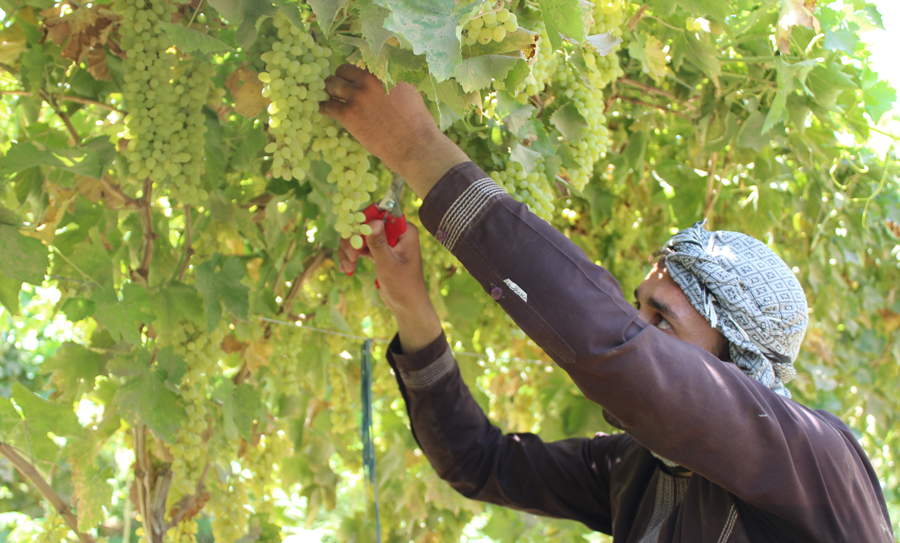
Grape trellising management pays dividends in Kunduz province. Photo: USAID RADP-North.
Funded by the U.S. Agency for International Development (USAID), RADP-North worked with local farmers, businesses, and leaders to produce impressive results over its five-year run, including:
- $256 million in additional sales in wheat and other RADP-North target commodities.
- $28 million of confirmed sales and $20 million in follow-up orders for dried fruit and nuts through beneficiaries’ attendance at trade shows.
- $8.3 million in increased profits by partner agribusinesses.
- $10.7 million in increased value of livestock, achieved through reduced mortality, increased reproduction, and increased sale of animal by-products.
- Nearly 20,000 women trained in nutrition and 7,700 kitchen gardens supported, empowering women to improve household nutrition, reduce child diarrhea, prevent anemia, and share nutrition principles.
The only USAID project headquartered in Afghanistan’s northern economic hub of Mazar-i-Sharif, RADP-North worked with partner provinces Badakhshan, Baghlan, Balkh, Jawzjan, Kunduz, and Samangan, home to 5 million people. Its resuscitation of the north’s agriculture economy succeeded in generating incomes and spinoff jobs for farm families and business operators.
Restoring the Breadbasket
RADP-North identified key barriers to the wheat sector’s growth:
- A lack of agricultural services throughout the wheat value chain;
- Weak input supply chains; and
- Inefficient, labor-intensive crop production.
RADP-North modernized the sector through market-led systemic improvements targeting soil, seed, and harvest. The project team implemented a program of conservation agriculture and introduced laser land-leveling, mechanized seeding, and mechanical harvesting.

Laser land-leveling such as here in Dehdadi, Balkh province is crucial to uniform irrigation and crop growth and saving water, seed, fertilizer, and irrigation time, among other benefits. Photo: USAID RADP-North.
Laser land-leveling: RADP-North facilitated the cost-share purchases of 35 laser-assisted land-leveling units by local service providers. Level farmland is crucial to distributing irrigation evenly across hectares, which promotes uniform crop growth and savings in water, seed, fertilizer, and irrigation time, among other benefits. Once trained by RADP-North, these land-leveling vendors sold their services to farmers. RADP-North facilitated the leveler supply chain—from the fabricators in Pakistan to the farmers purchasing the services—giving birth to a sector of equipment dealers and trained mechanics.
A single season of land leveling increased wheat yields and led to further mechanized operations, including for seeding and reaping. Leveling services are now being readily adopted since both farmers and service providers are profiting.
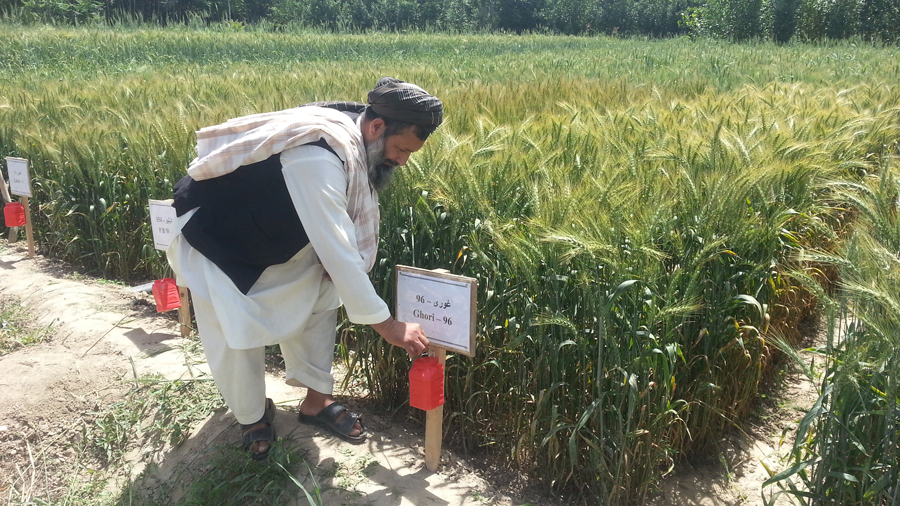
Farmers voting for favorite wheat varieties at seed field demonstration in Pul-e-Khumri, Baghlan province. Photo: USAID RADP-North.
Introducing better seed: RADP-North organized field demonstrations by seed purveyors of 20 certified varieties, showing farmers they could choose seed that best fits their growing conditions and budgets. Gaining farmers’ confidence in certified seed was crucial because previous seed distribution programs had often provided substandard or adulterated seed that did not accommodate soil, climate, and market requirements.
Farmers soon learned about the benefits of certified seed through word of mouth. RADP-North trained seed company field staff in marketing techniques such as field demos. Today, at least 10 seed businesses are connected with RADP-North farmers and better understand the market’s requirements.
Efficient seeding: Tractor-drawn seeders disperse seed and fertilize across leveled land quickly and evenly, reducing waste, improving spacing between plants, and reducing crop competition with weeds. RADP-North helped vendors obtain 39 new and 30 used tractor-seeder units through cost-share purchases, with vendors then marketing their services to farmers. Mechanized seeding bolstered both farmers’ production and the market for machine repair and maintenance.
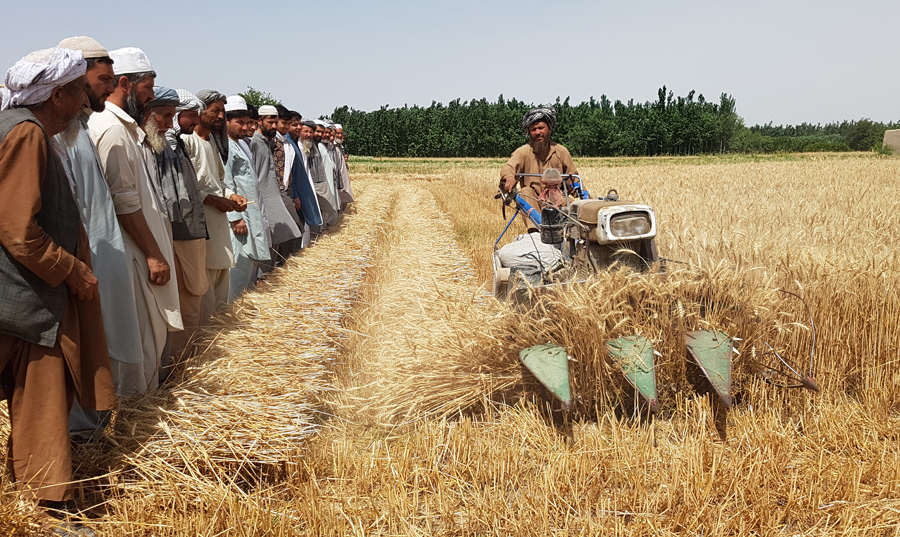
Two-wheel tractor reaping demonstration in Balkh district. Photo: USAID RADP-North.
Harvesting profits: Manual harvesting can comprise 30 percent of a farmer’s production costs. RADP-North facilitated contract harvesting by: mobilizing unused two-wheeled tractors and reaper equipment; establishing equipment owners as service contractors; helping aspiring contractors to procure new equipment; linking harvesting contractors to local mechanic workshops for service; demonstrating harvesting technology for farmers at field days; and linking harvesters with farmers.

Melon yields increased thanks to Integrated Pest Management training, as shown here in Samangan province. Photo: USAID RADP-North.
Diversifying Farms
RADP-North targeted sectors ripe for the export market, including orchards (apricot and almond), vineyards (grapes and raisins), and melons. Five dried fruit and nut agribusinesses assisted by RADP-North generated confirmed sales of $28 million and follow-up orders of $20 million through attendance at trade shows in China, India, Kazakhstan, Turkey, United Arab Emirates, and Uzbekistan. Follow-up sales indicate the buyers’ needs are being met.

Training families about nutrition in Kahlak, Jawzjan province. Photo: USAID RADP-North.
Boosting Nutrition
Many Afghans suffer from chronic undernutrition, often because they lack information about what to eat. RADP-North taught basic nutrition and helped women establish vegetable gardens in their yards, helping them to:
- Grow seasonally fresh vegetables;
- Save money by growing vegetables and herbs instead of purchasing them;
- Increase incomes through sales of surplus vegetables and herbs;
- Recycle and reuse household waste resources such as sweepings, kitchen scraps, and dirty garden water; and
- Employ uncultivated land around houses for productive purposes.
As RADP-North was ending, nearly all the women in the program were still maintaining their gardens, with some cultivating seasonal vegetables by purchasing their own seed or using seed saved from the previous crop season.
Women reported serving their families a more diverse diet while finding kitchen gardening enjoyable. Husbands expressed gratitude and many families sent their children to school with the required books and pens funded from the proceeds of selling excess produce. Support from community elders, husbands, and brothers is helping to assure sustainability; we expect this support to strengthen as they see improved cognitive capabilities in well nourished infants and toddlers during the first 1,000 days of life, which have such a critical impact on child development.
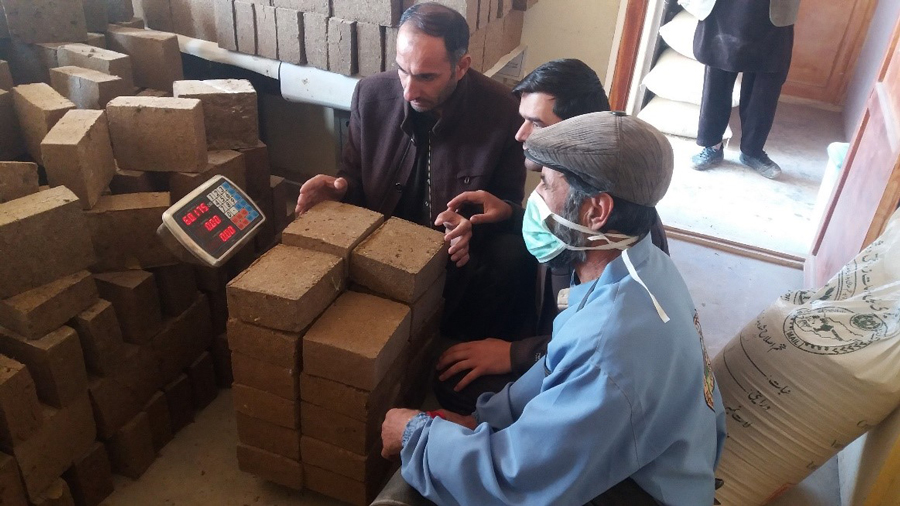
Feed blocks can be made anytime and stored and consumed by livestock throughout the winter without sophisticated technology and equipment. Photo: USAID RADP-North.
Healthy Livestock, Healthy Profits
RADP-North identified major bottlenecks to improving animal health and feed—deficiencies tied to goat and sheep mortality, reproductivity, weight gain, sales value, and disease resistance. The project implemented initiatives to improve animal diets, veterinary treatment, and the quality of butcher shops.
Winter feeding and veterinary field programs combined to reduce mortality loss by an estimated 25 percent (from $18.24 million to $13.68 million). Along with gains resulting from increased reproduction ($6.17 million) and increased sale of animal by-products ($48,450), RADP-North’s livestock activity delivered a $10.78 million increase for the northern economy.

Treat Farms as Businesses
Laser land leveling and conservation agriculture offer gateways to further agricultural development, including through mechanization and other efficient technologies. The RADP-North team learned much about introducing and upscaling laser land-leveling and other next steps in advanced production.
RADP-North also helped jumpstart the wheat trade by hosting business-to-business events. These gatherings showed producers, processors, wholesalers, and retailers that Afghan wheat can compete with imports to meet the needs of bakers and pasta makers, and produced transactions for 835 tons of wheat and flour over 46 contracts.
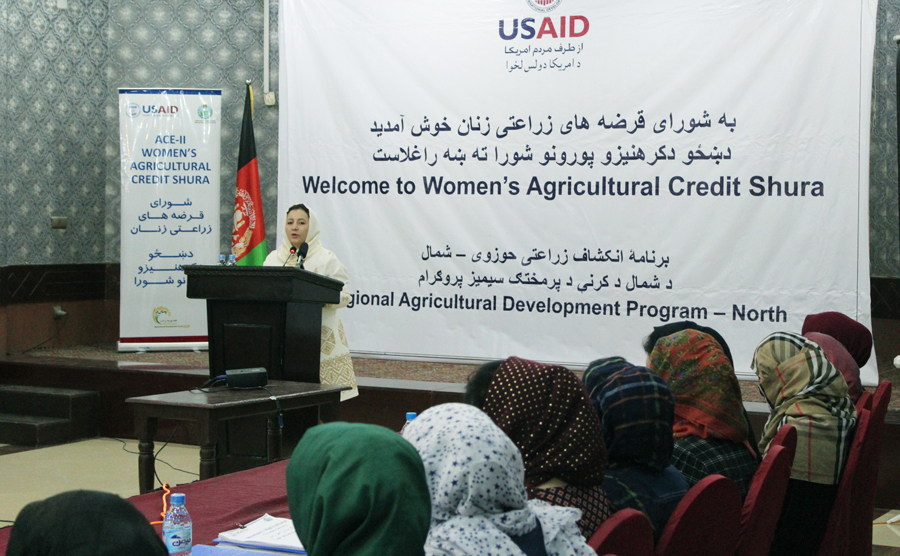
RADP-North’s Gender Outreach Specialist briefing participants in Mazar-i-Sharif on the availability of agricultural loans. Photo: USAID RADP-North.
The RADP-North project generated impressive results and value. But its most impressive achievement might be unveiling further opportunities to make Afghanistan’s agricultural economy more resilient, inclusive, and profitable for generations to come.
Going forward, instead of focusing on a value chain such as wheat, future assistance in Afghanistan should shift toward developing farm systems and introducing profit-generating technologies. By treating the farm as a business with investment options, and farmers as businesspeople balancing risk and reward, and recognizing that rotational crops and other conservation approaches can improve and sustain crop productivity, projects can deliver broader economic growth and nutrition outcomes. There is also much value to be realized through under-invested crops indigenous to Afghanistan that have a history of export—including the mungbean and sesame in high demand regionally—high-margin oilseeds, and pulses.
DAI’s Rich Magnani was Chief of Party for USAID’s Regional Agricultural Development Program–North.